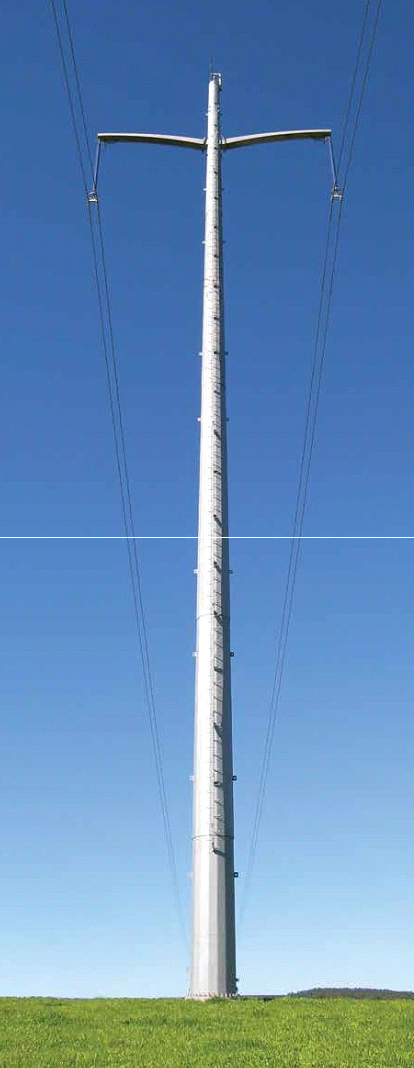HT/LT Line Pole

The electric lines that generate the most public interest are often high-voltage transmission lines. These are the largest and most visible electric lines. Most large cities require several transmission lines for reliable electric service.
Transmission lines are larger than the more common distribution lines that exist along rural roads and city streets. Transmission line poles or structures are commonly between 60 and 140 feet tall. Distribution line structures are approximately 40 to 60 feet tall.
There are several different kinds of transmission structures. Transmission structures can be constructed of metal or wood. They can be single-poled or multi-poled. They can be single-circuited, carrying one set of transmission lines or double-circuited with two sets of lines.
Different transmission structures have different material and construction costs, and require different right-of-way widths, distances between structures (span length), and pole heights. Construction requirements and costs also vary with the different sized voltages. In the past, many transmission lines were constructed on H-frame wood structures and metal lattice structures. New lines are most often constructed with single pole structures because of right-of-way width limitations and environmental considerations. Current right-of-way widths vary between 80 to 150 feet.
Pole height and load capacity limitations determine the distance between poles (span length) either on the basis of ground clearance or ability to support heavy wind and ice loads. In areas where single-pole structures are preferred, weak or wet soils may require concrete foundations for support. Where a transmission line must cross a street or slightly change direction, larger angle structures or guy wires may be required. Poles with guy wires impact a much larger area. Angle structures are usually more than double the diameter of other steel poles. They are made of steel, usually five to six feet in diameter, and have a large concrete base. The base may be buried ten or more feet below the ground surface. The diameter of the pole and the depth the base is buried depends on the condition of the soils and the voltage of the line.

